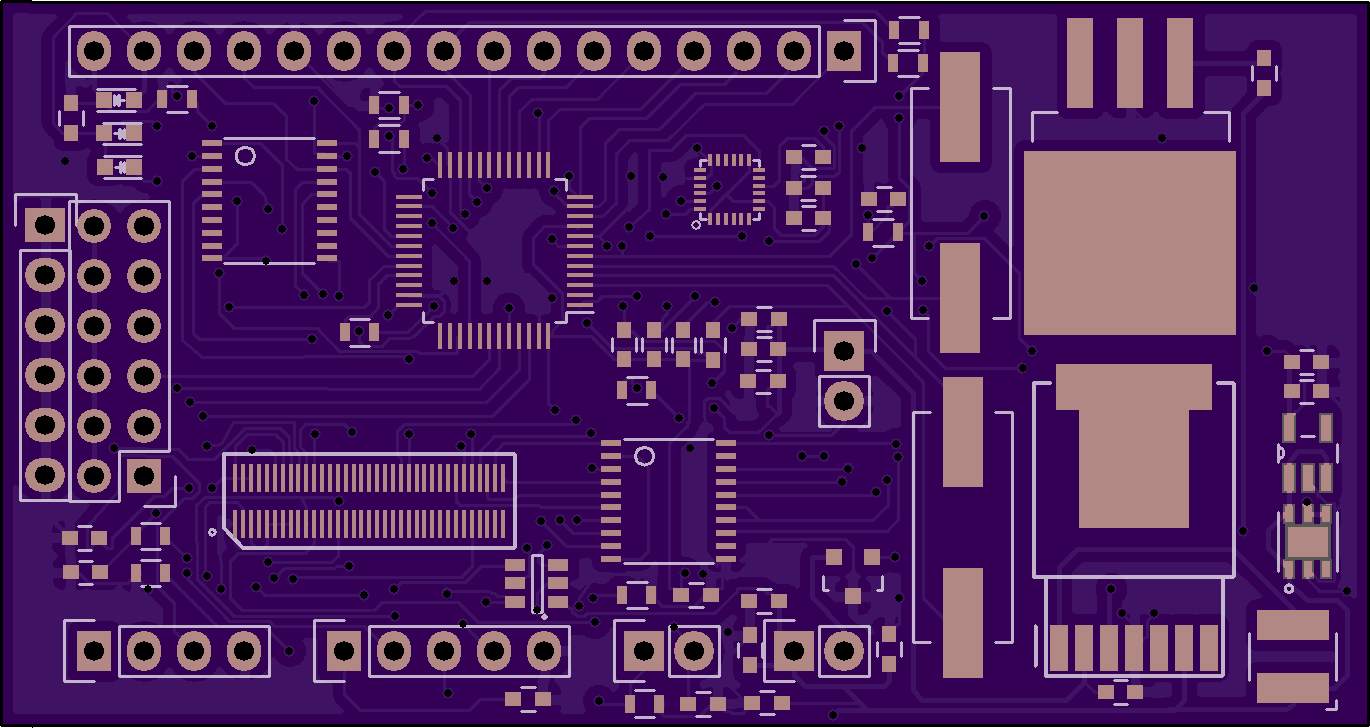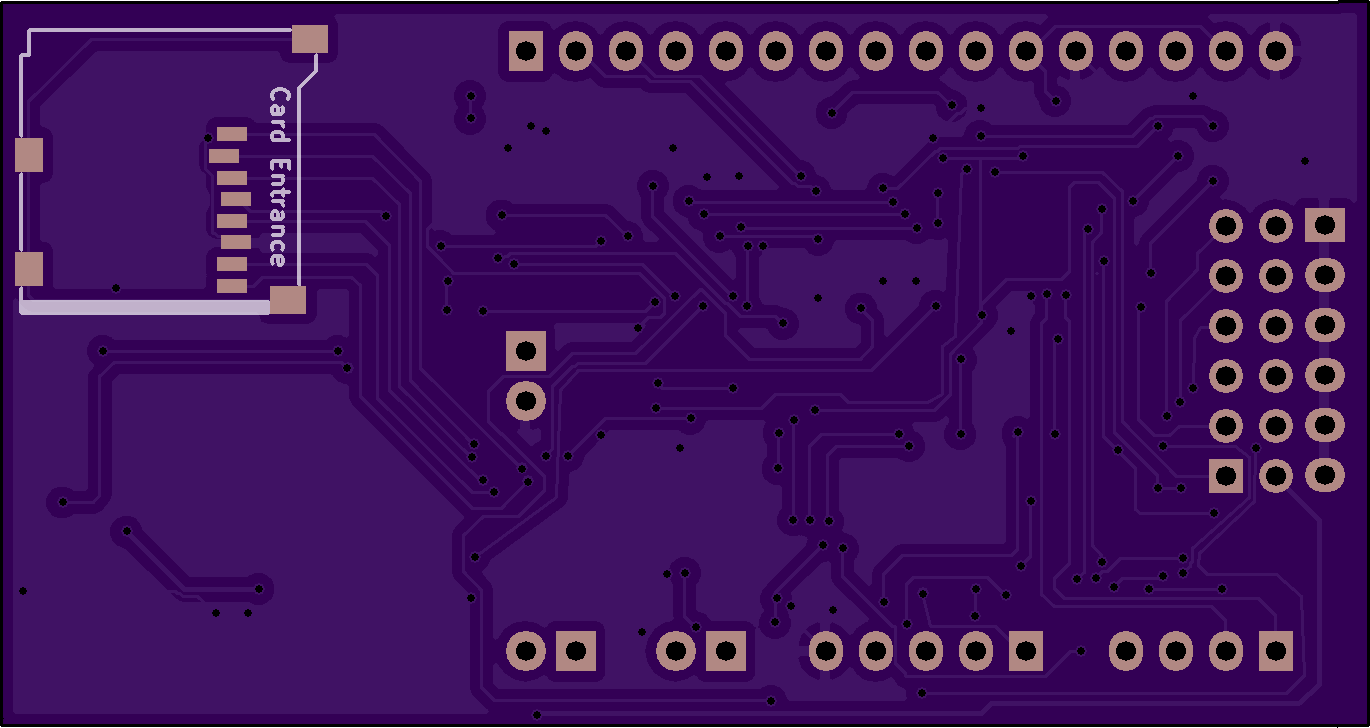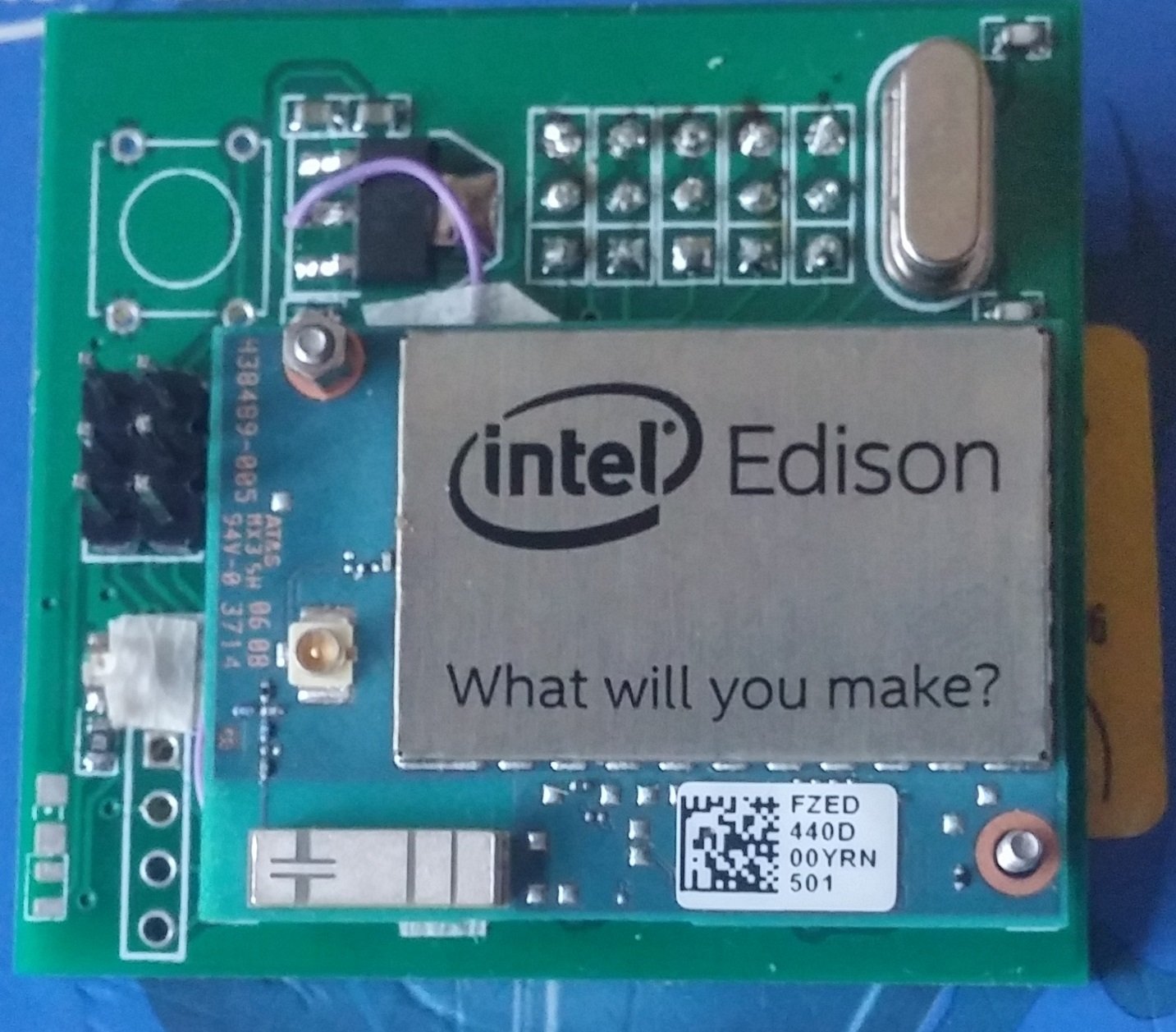Introduction
The Ediplane brought you a simple Intel Edison flight controller. Now, it is time to kick it up a notch. Meet EdiCopter, a full blown autonomous flight controller with many improvements and added features as compared to the EdiPlane Board.


Improved feature list
- STM32uf103 microcontroller (32 bit)
- 6 PWM Outputs
- Onboard power distribution( takes 3S/4S)
- More GPIO out for convenience
- MicroSD Card for logging
- 70mm x 37mm
Documentation
We are proud to say that this is the first open-source Intel Edison based flight controller. We will release the schematics and kicad files soon once we confirm its functionality. We will post a follow up to this with testing results once we manage to assemble the board.
Potential applications
This board could be used as a autonomous drone controller which is its primary goal. However, the GPIO breakouts allow you to customize the firmware to act as a general single board computer which has a multitude of applications in all kinds of systems f
They say that the best weapon is the one you never have to fire. I respectfully disagree. I prefer the weapon you only have to fire once.
- Tony Stark, Iron Man (2008)
For once, I actually disagree with Tony Stark. In this ever developing age of computing and cyber warfare, most weapons are not really fired. Rather, most warfare occurs rather passively with spy missions or other reconnaissance missions being used to get military secrets from other countries. UAV's like drones and quadcopters are now becoming commonplace in a country's military arsenal and this is becoming a much larger part of military operations than actual invasion and the active act of war. Stealing IP of a country proves to be as effective as the active act of war.
Introduction
This year the Tan Kah Kee Young Inventor's Award (TKKYIA) 2016 launched and as usual we participated in the Defense Science section of it. Defense Science is quite important as we need to equip the country with the required tools and equip
Introduction
The quadcopter industry has been booming recently and along with that has come a surge of new flight controllers. Along with the popular APM and Naza platforms, flight controllers like the Naze 32 are also taking front stage. Recently, I decided to build an autonomous quad from scratch and I found myself stuck. I simply could not find a capable flight platform for a fully autonomous flight platform with a vision system. All the flight controllers today required some form of seperate computer like the Raspberry Pi to carry out vision robotics. So, I decided to do myself a favor and go make a fully autonomous quad platform.
The EdiPlane board
The EdiPlane board is Edison-Arduino integrated board which is intended for use in a fully autonomous drone/rover platform. It takes the ATMEL ATMEGA 328 chip and combines it with the computing power of the Intel Edison to get a perfect combination of computing power and I/O pins.

How it works
The EdiPlane is simply a board which allow
This is the first installment in a series of posts which documents my journey into room automation. We have come up with a basic plan and bought essential materials which I will be outlining in this post. In the next post, I will be talking about the installation of the system, in the third post I will talking about the software be the project and in the last post I will conclude with a study on its feasibility and usefulness.
The Plan
My room is an average sized room with the normal functionality. I have 1 light, 1 fan and an air-conditioning unit which needs to be remotely controlled. I do have a desktop PC in my room which can potentially used as the controller unit. I also need a passcode lock security system to be implemented as my projects and expensive equipment are going to be stored in my room.
The current plan is to use the PC as the main controller and the Arduino Pro mini as the micro controller. The PC can send serial commands over wifi to the Pro Mini which is connected t
Recently, team MakerBreak (consisting of me, Isaac and Sudharshan) competed in the student category of Hackathon@SG. The competition theme this year was on "Smart Nation", where we are to work on a project related to building a smart nation. There was even hardware provided by the sponsors, including the Nabu X, VR One and Tweeq.
Of course, as adventurous students, we took the VR One as we wanted to play with VR. It was a nice piece of equipment, being much much better than the Google Cardboard.
We came up with a few ideas, before the hackathon. Most of the students there were studying in university and junior college, and we were among the few secondary students there.

Armed with a (Relay Shield), WiFly RN-XV module, an Arduino Uno, a power adapter, soldering irons, wires



